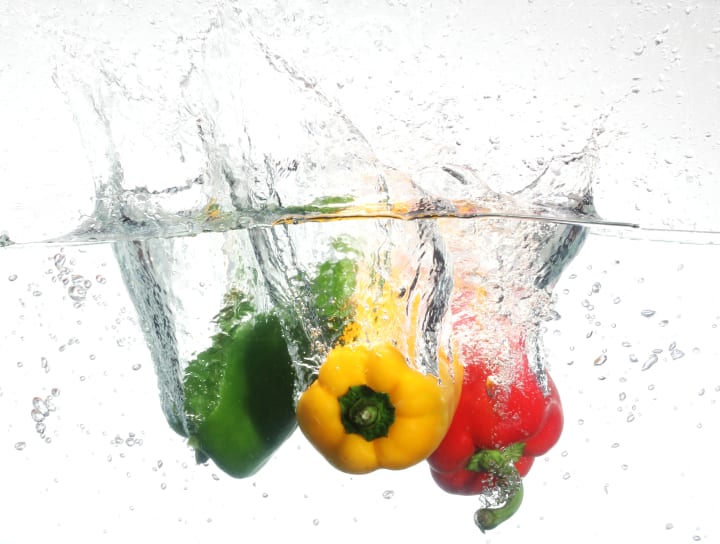Home / The Henkelman vacuuming process
The Henkelman vacuuming process
For perfect results, always follow the five-step Henkelman vacuum-packing process.
Step 1: cool products


Step 2: air extraction
Once you have chosen the correct program and closed the lid, the vacuum process begins. In concrete terms, this means that the machine extracts all air from the bag, the product and the chamber so that the desired vacuum result is achieved or until the boiling point of the liquids has been detected.
Step 3: gas flushing (optional)
Before the bag is sealed, a preservation gas can be added. This extends the life span of the food and helps maintain the shape, color, structure and quality of the product. Gas flushing is ideal for sliced products such as fruit and vegetables.

Step 4: bag sealing
When all the air has been extracted and gas has been injected if required, the bag is sealed. This ensures that the product is protected against external factors. You can choose the right sealing system to suit the type and thickness of the vacuum bag. Henkelman machines are fitted with a double seal, but you can also opt for a cut-off or wide seal. Or, depending on the model, bi-active seal, 1-2 cut-off seal.
Step 5: aerate chamber
The final step in the vacuuming process is removing the vacuum from the chamber. This is done simply by introducing air back into the chamber through the aeration valve. Once the pressure in the chamber is equal to the pressure outside the chamber, the lid opens. If you are using the soft-air option, this step takes place gradually to prevent sharp objects from tearing through the bag or crushing a soft product.
Good to know if you are vacuum-packing

Gas Flush / MAP packaging
Extends the shelf-life and protects vulnerable products from distortion and discoloration through the addition of preservative gas
Gas Flush / MAP packaging
×Why gas flushing (MAP)?
Modified Atmospheric Packaging (MAP) is the addition of a preservative gas during the vacuum packing of vulnerable products such as chopped lettuce, crisps, part-baked goods and / or cooked fish. As well as extending the shelf-life and protecting these products, the addition of gas also prevents discoloration and distortion.
How does it work?
Preservative gas is injected into the vacuum bag after the vacuuming process but before sealing. The gas is usually a mixture of nitrogen (N2) or Argon (Ar) and carbon dioxide (CO2), and in some cases extra oxygen (O2). A special oxygen pump is needed for gas mixtures with more than 20% oxygen.

Liquid Control
Stops the vacuuming process when evaporation is detected. This prevents contamination of the chamber, oxidation of the pump, and dehydration and loss of weight
Liquid Control
×Why Liquid Control?
Lowering the pressure in the vacuum chamber causes liquids to boil. Even if they are cold. This is a law of nature. The Liquid Control sensor detects the evaporation that is released. Once boiling point is reached, the vacuum packing machine stops vacuuming and starts sealing. This prevents damage to the product and contamination of the chamber. It also avoids oxidation of the pump.
Soft air
This enables the optimal vacuum packing of sharp or sensitive products without damaging the product or vacuum bag.
Soft air
×Why soft air?
When packing sharp or soft products, soft air ensures that the chamber is aerated gradually and in a controlled way after the vacuuming process. The vacuum bag therefore encloses the product gradually and in a controlled way, ensuring optimal protection.
This makes soft air ideal for packing items such as strawberries, brie and meat products with bone, as well as non-food products such as screws, bolts, electronics etc.

Pump cleaning program
Moisture is sometimes released during the process. This collects inside the pump. The accumulation of this moisture leads to corrosion which is harmful to the pump. Every Henkelman machine automatically indicates on the display when it is time to use the pump cleaning program. The pump is heated and ventilated for five minutes, ensuring moisture to evaporate.




